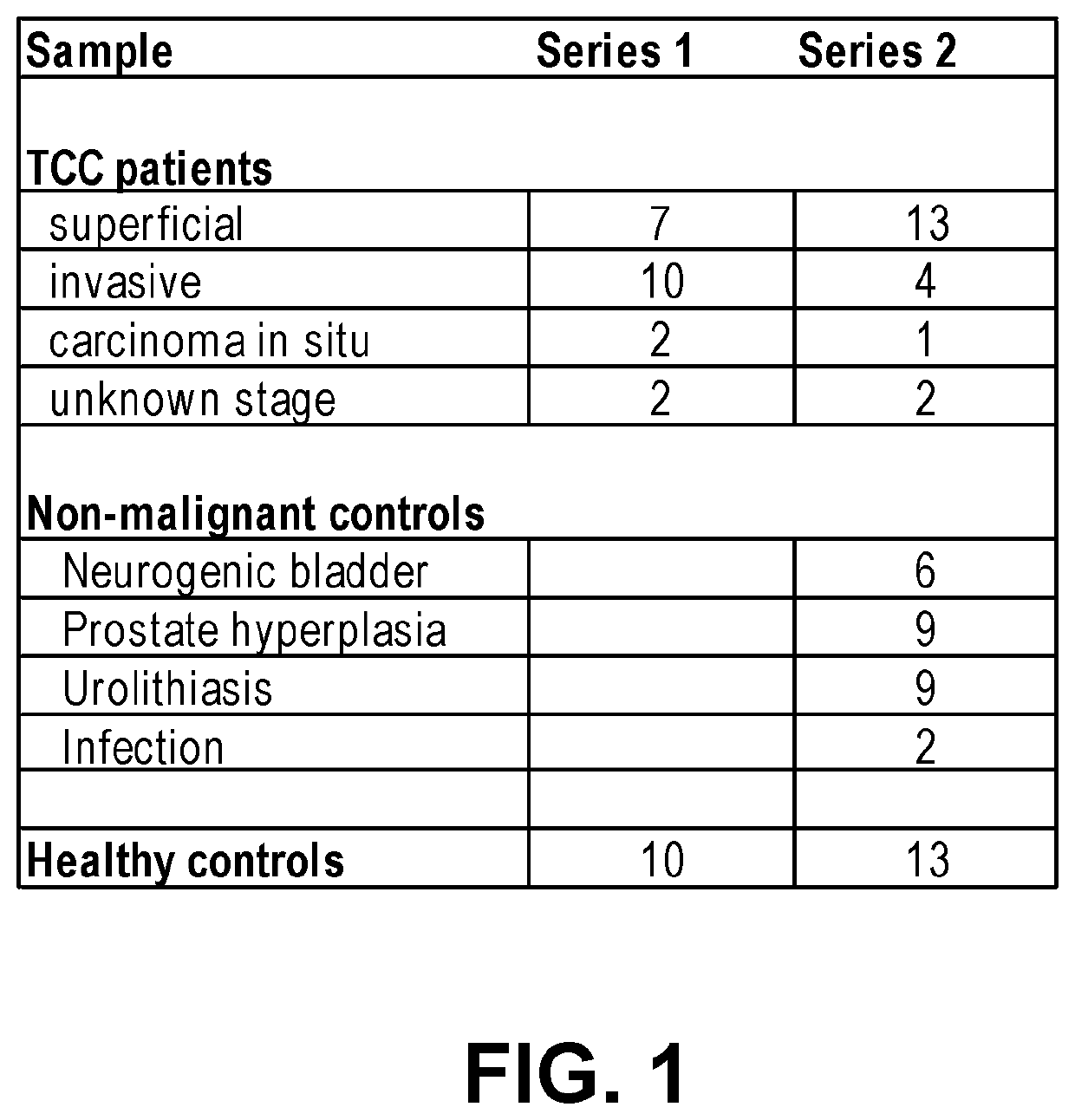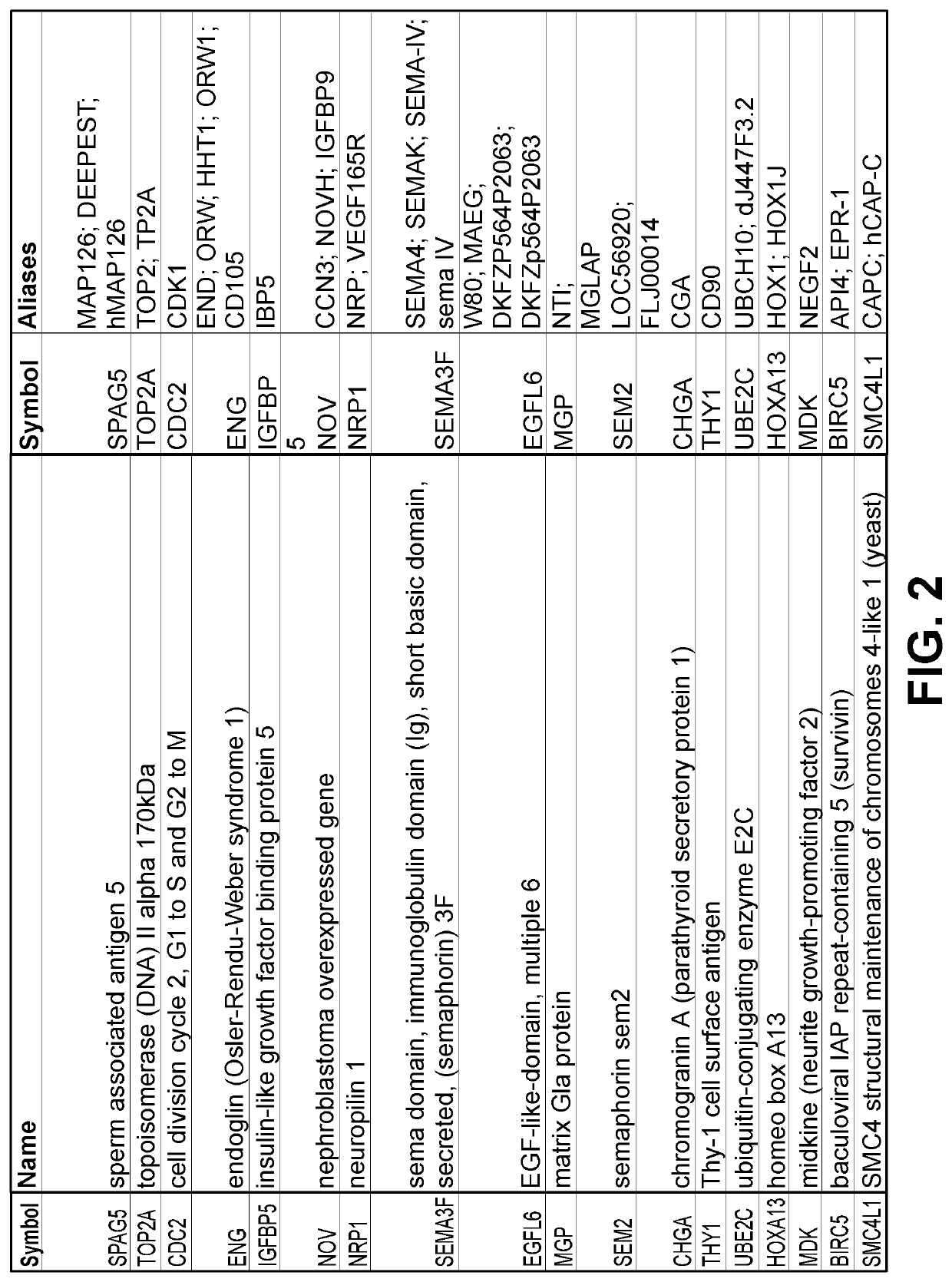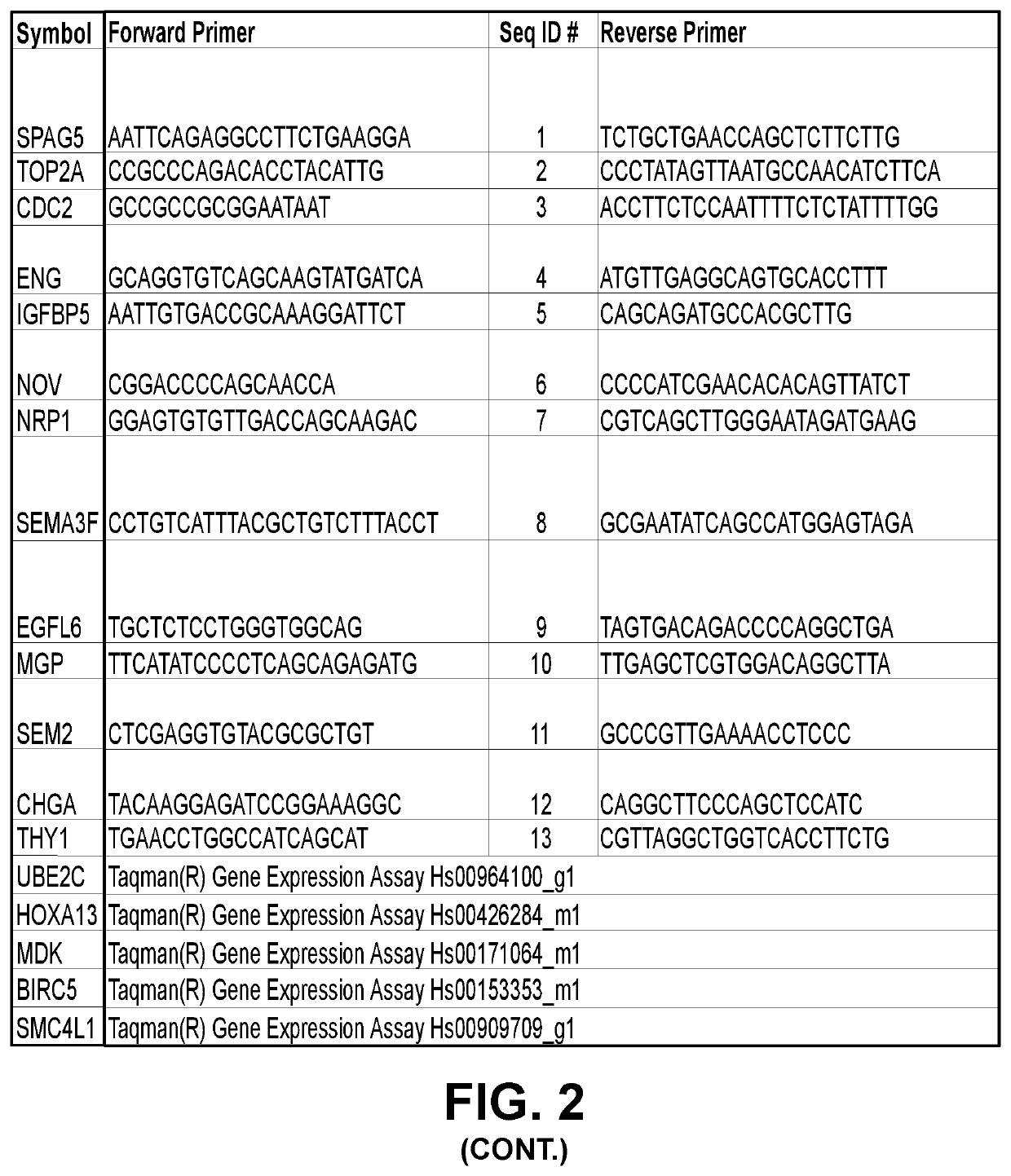Urine Markers and Methods for Detection of Bladder Cancer and Treatment Thereof
a technology of urine markers and bladder cancer, applied in the field of cancer detection, can solve the problems of unfavorable detection of non-specific materials from array spots, and achieve the effect of high reliability, sensitive and specific diagnosis of bladder cancer
- Summary
- Abstract
- Description
- Claims
- Application Information
AI Technical Summary
Benefits of technology
Problems solved by technology
Method used
Image
Examples
example 1
ation of Markers for Superficial and Invasive Malignancy of the Bladder
[0154]Hierarchal clustering of microarray data from the gene expression patterns of invasive and superficial bladder cancer showed large numbers of significant differences. As a result, these cancer types were treated separately in the following analyses. Nevertheless, a high proportion of genes are over-expressed in both cancer types. FIG. 3 depicts a table that shows results of microarray studies for markers for invasive bladder malignancy. Thirty-one of the 199 invasive markers meet the above-stated criteria for serum markers (Denoted by “S” in figure). FIG. 4 depicts a table that shows results of microarray studies for superficial bladder malignancy. Thirty-four of the 170 superficial markers meet the above criteria for serum markers. FIGS. 3 and 4 include the HUGO symbol for the gene (“symbol”), the MWG Biotech oligonucleotide number, the NCBI mRNA reference sequence number, the protein reference sequence nu...
example 2
ysis
[0156]More sensitive and accurate quantitation of gene expression was obtained for a subset of the genes shown in FIGS. 3 & 4 using qPCR. Messenger RNA from up to 30 invasive bladder tumors, 25 superficial bladder tumors, and 18 samples of normal urothelium were analyzed for 18 genes identified by the microarray analysis (FIGS. 3 & 4), with the results shown in FIG. 5. Data for both invasive and superficial type bladder cancer is shown for markers SPAG5, TOP2a, CDCl2, ENG, NRP1, EGFL6, SEM2, CHGA, UBE2C, HOXA13, MDK, THY1, BIRC5 and SMC4L1. Markers SEMA3F, IGFBP5, and NOV were only over-expressed compared to normal urothelium in the superficial type alone, and MGP was only over-expressed in the invasive type alone; these markers maintained similar expression to normal urothelium in the tumor samples that were not over-expressed. FIG. 5 includes the gene name, gene aliases, the gene symbol, the median fold change between tumor (T) and non-malignant (N) tissue, the maximum fold ch...
example 3
ltiple Markers in Detection of Bladder Cancer
[0168]FIGS. 12a-12b depict histograms of the number of genes exhibiting a significantly increased expression (“over-expression”) in individual tumor samples compared to normal samples. The histograms were based on qPCR data obtained from the first twelve markers shown in FIG. 5. Of the 30 invasive tumors in the PCR analysis, 27 (90%) over-expressed at least four genes greater than the 95th percentile (FIG. 12a). Of the 25 superficial tumors in the analysis, 23 (92%) over-expressed at least four genes greater than the 95th percentile (FIG. 12b). These findings indicates that, in situations in which multiple genes are over-expressed relative to normal tissue, the reliability of cancer detection can be very high, making diagnosis of cancer more certain. However, in some cases, elevation of expression of a single marker gene is sufficient to lead to the diagnosis of cancer.
[0169]The reliability of successful discrimination of tumor and non-tu...
PUM
| Property | Measurement | Unit |
|---|---|---|
| pH | aaaaa | aaaaa |
| threshold | aaaaa | aaaaa |
| density | aaaaa | aaaaa |
Abstract
Description
Claims
Application Information
 Login to View More
Login to View More - R&D
- Intellectual Property
- Life Sciences
- Materials
- Tech Scout
- Unparalleled Data Quality
- Higher Quality Content
- 60% Fewer Hallucinations
Browse by: Latest US Patents, China's latest patents, Technical Efficacy Thesaurus, Application Domain, Technology Topic, Popular Technical Reports.
© 2025 PatSnap. All rights reserved.Legal|Privacy policy|Modern Slavery Act Transparency Statement|Sitemap|About US| Contact US: help@patsnap.com



